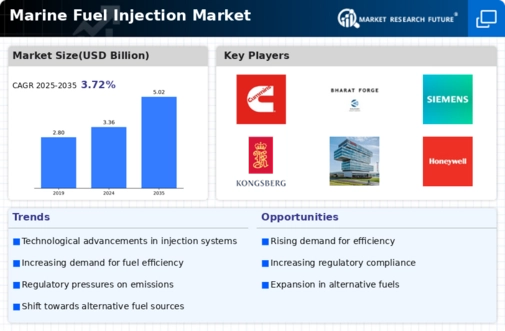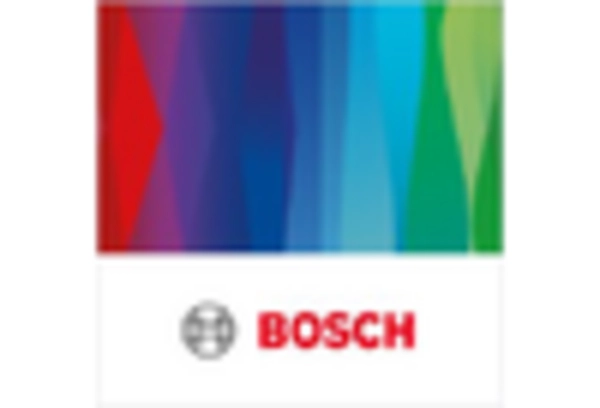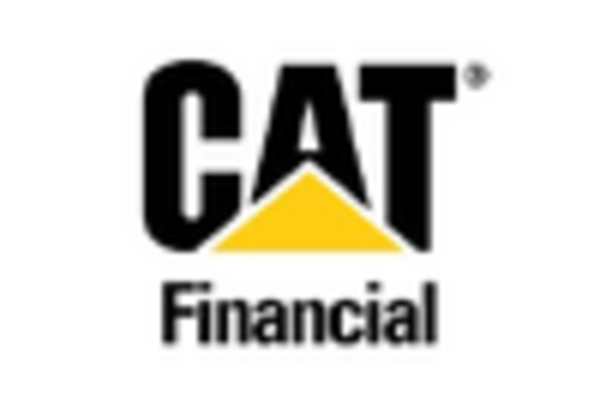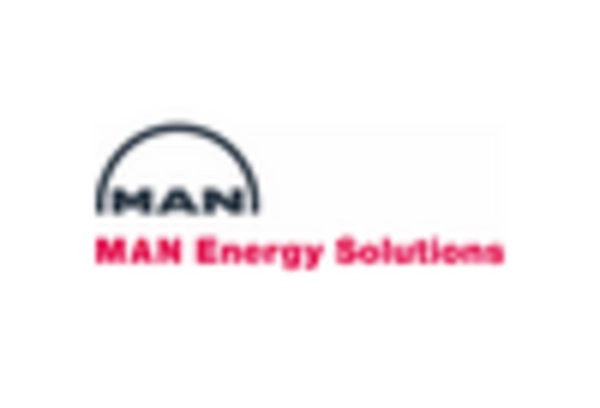Regulatory Compliance
Regulatory compliance is a critical driver in the Marine Fuel Injection Market, as governments worldwide implement stricter emissions standards. The International Maritime Organization has set ambitious targets for reducing greenhouse gas emissions from shipping, which has prompted shipbuilders and operators to seek advanced fuel injection solutions. Compliance with these regulations often requires the integration of sophisticated fuel injection technologies that can adapt to various fuel types and optimize combustion efficiency. As a result, the market for marine fuel injection systems is projected to expand significantly, with estimates suggesting a growth rate of around 10 percent annually. This regulatory landscape not only influences product development but also encourages collaboration between manufacturers and regulatory bodies to ensure that innovations meet compliance requirements.
Sustainability Initiatives
Sustainability initiatives are playing a pivotal role in shaping the Marine Fuel Injection Market. With increasing awareness of environmental issues, there is a growing demand for fuel injection systems that minimize carbon footprints. The industry is witnessing a shift towards biofuels and alternative energy sources, which necessitates the development of compatible fuel injection technologies. Recent statistics indicate that the market for sustainable marine fuels is expected to grow at a compound annual growth rate of 12 percent in the coming years. This shift not only aligns with global sustainability goals but also presents opportunities for innovation in fuel injection systems. Companies that prioritize sustainability in their product offerings are likely to gain a competitive edge, as stakeholders increasingly favor environmentally responsible practices.
Integration of Digital Technologies
The integration of digital technologies is transforming the Marine Fuel Injection Market, as companies leverage data analytics and IoT solutions to enhance performance. Digital tools enable real-time monitoring of fuel injection systems, allowing for predictive maintenance and optimization of fuel usage. This technological shift is expected to improve operational efficiency and reduce downtime, which is critical in the highly competitive marine sector. Market Research Future suggests that the adoption of digital solutions in marine operations could lead to cost savings of up to 20 percent. As stakeholders increasingly recognize the value of data-driven decision-making, the demand for digitally integrated fuel injection systems is likely to grow. This trend not only enhances the performance of marine engines but also aligns with broader industry efforts to embrace digital transformation.
Rising Demand for Efficient Marine Operations
The rising demand for efficient marine operations is a significant driver of the Marine Fuel Injection Market. As global trade continues to expand, shipping companies are under pressure to enhance operational efficiency and reduce fuel costs. Advanced fuel injection systems play a crucial role in achieving these objectives by improving fuel atomization and combustion efficiency. Recent analyses indicate that the marine sector accounts for approximately 90 percent of world trade, underscoring the importance of optimizing fuel consumption. Consequently, the demand for high-performance fuel injection systems is expected to rise, as operators seek to maximize their return on investment. This trend is likely to stimulate innovation and competition within the Marine Fuel Injection Market, as companies strive to meet the evolving needs of the maritime sector.
Technological Advancements in Marine Fuel Injection
The Marine Fuel Injection Market is experiencing a surge in technological advancements that enhance fuel efficiency and reduce emissions. Innovations such as common rail fuel injection systems and electronic control units are becoming increasingly prevalent. These technologies allow for precise fuel delivery, optimizing combustion processes and improving overall engine performance. According to recent data, the adoption of advanced fuel injection systems is projected to increase by approximately 15 percent over the next five years. This trend is driven by the need for compliance with stringent environmental regulations and the demand for higher efficiency in marine operations. As a result, manufacturers are investing heavily in research and development to create more sophisticated fuel injection solutions, which is likely to reshape the competitive landscape of the Marine Fuel Injection Market.


















Leave a Comment